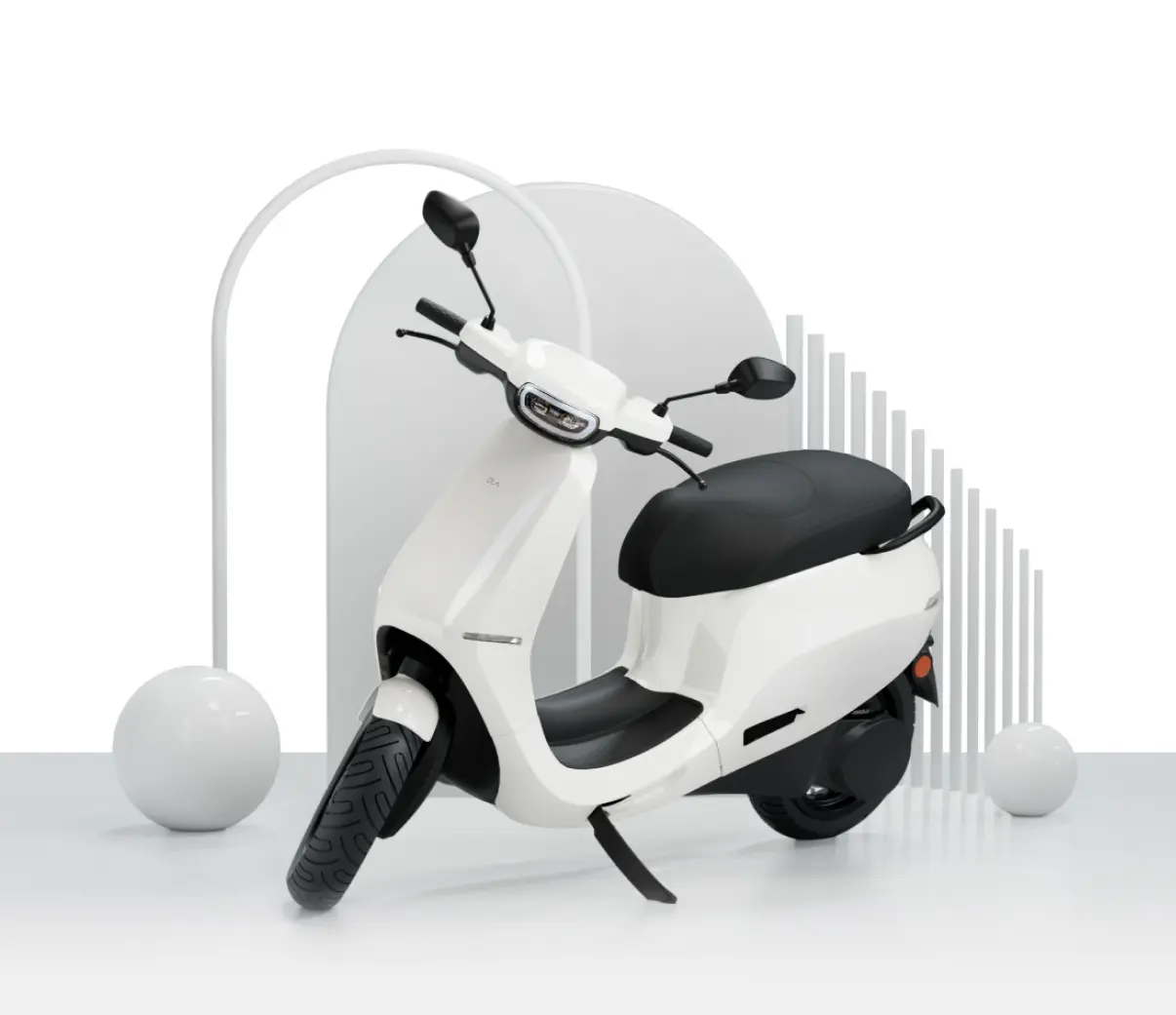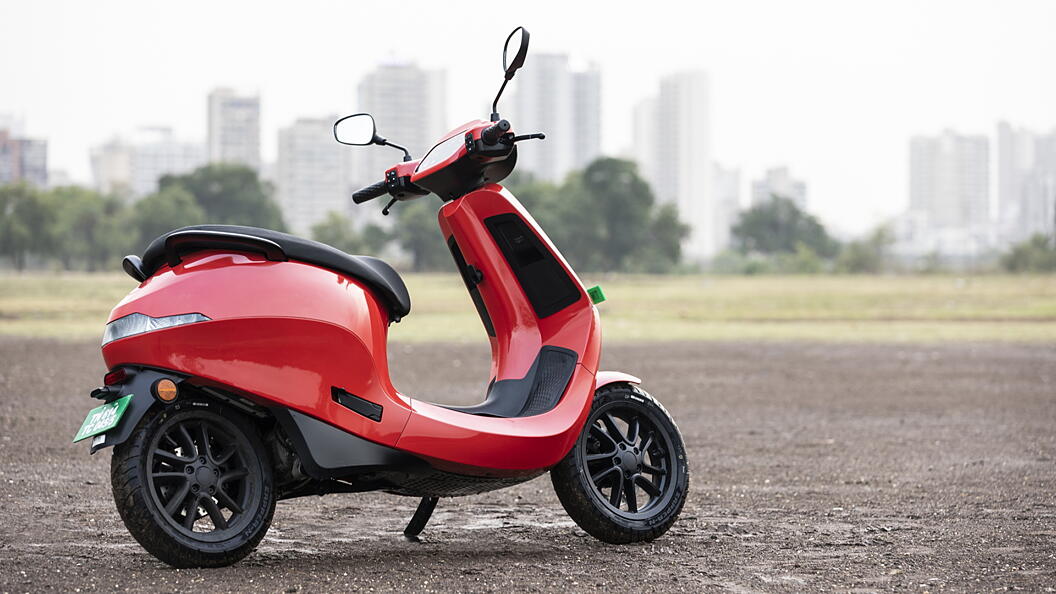Valuation Slashed But Ola Gears Up For IPO Dreams: A Strange Narrative Of Indian Start-Ups!
For Ola Electric, the last year has been a rollercoaster ride, from public outrage over a series of potentially fatal safety accidents involving its scooters to setting the groundwork for an extensive public listing.

Following a 15-month break, discussions about Ola Group’s financing, valuation, and public-listing aspirations have revived with renewed energy. It first made headlines a few days ago when Ola Electric announced a new investment round. This was quickly followed by the scooter manufacturer’s proposal for a massive public listing.
Last week, it was revealed that, in addition to existing investor Temasek, Infosys founder Narayana Murthy’s Catamaran is negotiating with Ola Electric, which is trying to fund around USD300 million in the current round. With a 22% interest in Ola Electric, SoftBank is unlikely to participate in this round.

The latest round is nearing an end after around 10 months of arduous labour and a minor increase in valuation compared to the tremendous climb that Ola Electric experienced in prior rounds. It was reported in February about a fresh fundraising in the works. It was supposed to close in April or May but is currently under construction.
- Ola Electric received USD260 million at a USD1 billion valuation four years ago, based solely on a proposal to develop an electric-mobility firm.
- Ola Electric secured another USD340 million at a USD2.7 billion valuation two years later when it launched its EV initiative by acquiring a small electric scooter company and establishing a vast two-wheeler plant.
- When it commenced manufacturing the scooter in January 2022, the business received an additional USD200 million at a USD5 billion valuation.
This new round is longer and more complex than the previous ones. According to a reliable source, the finance discussions took longer than expected since Ola Electric’s founder and CEO, Bhavish Aggarwal, demanded a USD9 billion value. According to individuals, the fresh round may conclude at a valuation of between USD 5 billion and USD 6 billion.
The IPO countdown has begun.
When this fundraising round is completed, Aggarwal will initiate the public offering of Ola Electric at a target valuation of over USD 10 billion. Topsy Mathew, a former managing director at Standard Chartered Bank who led the corporate finance business for ASEAN and South Asia, has been appointed to manage Ola Electric’s public offering. Aggarwal intends to register for an IPO in November and to list on the stock exchanges before the general election. According to one of the sources, he may seek another investment round before listing.

In line with the IPO aspirations, Ankush Aggarwal, Ola Electric’s recently appointed chief business officer and the company’s founder’s brother, said last week that the company’s sales will exceed USD1 billion in the current fiscal year.
Ola Electric should sell around 6,60,000 scooters each year to generate that amount of money. The firm sold slightly more than 50,000 units in the first two months of the fiscal year. Even if a price increase is projected to reduce demand in the coming months, its monthly sales should more than treble its greatest result so far.
So, what gives Ola Electric and the Aggarwals the confidence to be optimistic about their sales estimates and market debut?
The number one spot.
Ola Electric spent nearly two-thirds of the USD900 million it raised to build a large scooter manufacturing plant with an annual target capacity of 10 million units, hire top talent, acquire a small Dutch electric scooter startup, launch a digital marketing blitz, build showrooms, and price its offerings competitively.
Ola Electric is the country’s largest electric two-wheeler manufacturer in terms of operations, owing to the sheer quantity of its capital, employees, and installed capacity. As a result, it had a natural edge in terms of sales.
Ola Electric rose to the top of the sales rankings in less than a year. Ola Electric’s appealing price, marketing strength, and speed — all fueled by venture capital (VC) — aided it in consistently increasing sales and achieving a 27% market share last month.
The brief about India’s electric scooter industry.
According to McKinsey, India’s electric two-wheeler industry will reach 9.2 million units by 2030. Some VC and PE investors feel that even a fifth of that market in a multi-cornered competition would make Ola a formidable gamble. Ola’s attempts to begin production of battery cells and achieve economies of scale through more extensive sales may help it keep pricing under control as volume increases. All of this appears to be encouraging.
1686386878888.jpg)
When the rubber hits the road.
Ola has frequently fallen short of its loud predictions.
A fire and several complaints on social media about safety, quality, and performance concerns subdued the early euphoria. The corporation needed to undertake a strong sales push because just a small percentage of the 500,000 pre-bookings were turned into actual sales.
A case in point is the cab company, which piqued the interest of many top VC-PE investors. Investors have contributed over USD 4 billion to Ola’s primary cab aggregation firm. According to a financial prediction given by Ola Cabs in 2017, the firm will have profited roughly USD1 billion by March 2020. However, it fell well short of that goal, losing USD302 million on revenue of USD290 million that year. Revenue and loss were cut in half during the pandemic-hit FY21. ANI Technologies Pvt Ltd, which operates Ola Cabs, has yet to disclose its FY22 financials.
Aggarwal explored growing and diversifying the firm to fulfil Ola Cabs’ high goal. The company began worldwide operations, ventured into financial services, attempted several times to establish supermarket and food-delivery businesses, and even ventured into used vehicle sales. Several of those enterprises failed to scale up.
In the EV sector, Ola Electric’s market position and Aggarwal’s over-investment plan might work in the company’s favour when it declares its desire to go public next year. It will, however, need to solve the unit economics issue.

According to sources, the business considerably underpriced its scooters compared to competitors, resulting in a gross loss of INR30,000 per unit. This figure would rise much more. It was pointed out that Ola was the most aggressive in absorbing the impact on costs after the government decreased the electric-vehicle subsidiary. It barely passed on 40% of the impact of subsidy cutbacks on pricing.
Aggarwal wishes to reduce costs through back-end integration, battery cell production, and economies of scale gained from higher sales. They are, however, a work in progress. According to a previous Ola CXO, one thing he must keep in mind is maintaining his concentration.
Amid Ola Electric’s financing and IPO aspirations, Aggarwal has shown his desire to join the AI bandwagon. It was previously reported that he had launched a new firm that will likely enter the AI field. According to a source, he is gathering finances and employing AI scientists to get this new enterprise off the ground. Another former CXO who worked closely with Aggarwal describes it as a “blatant valuation-chasing” effort by mentioning that it couldn’t have been more apparent.
Former Ola executives in prominent positions think that investors like Temasek and Catamaran are interested in investing money because of the potential IPO next year. The publicity surrounding Ola Electric’s IPO is said to be aiding its current cash drive.
An IPO that never happened- instances from the past!
Ola’s IPO preparations were frantic in the middle of 2021. The extravagant goal of the cab aggregation unicorn to raise a billion dollars from the public market garnered press headlines. The internal valuation was set at USD 15 billion. Ola established other companies, such as used vehicle sales and rapid commerce, with much enthusiasm. They were ostensibly intended to demonstrate the company’s ability to leverage its user base to grow new digital enterprises.

The vehicle company held pre-IPO fundraising. Its submission of a draught red herring prospectus (DRHP) was widely anticipated. The filing date changed, as did the value objective. Ola shut down those new operations immediately but kept the possibility of an IPO alive for more than a year. As late as December 2022, the company’s co-founder and CEO Aggarwal mentioned a public offering in the second half of 2023.
Conclusion.
For Ola Electric, the last year has been a rollercoaster ride, from public outrage over a series of potentially fatal safety accidents involving its scooters to setting the groundwork for an extensive public listing.
Proofread & Published By Naveenika Chauhan
There is no trace of the public listing right now. The firm has not yet filed the DRHP. Those intentions appear to have been put on hold while the company prepares for another IPO. Let’s see what’s written in the IPO fate of another Indian start-up.




